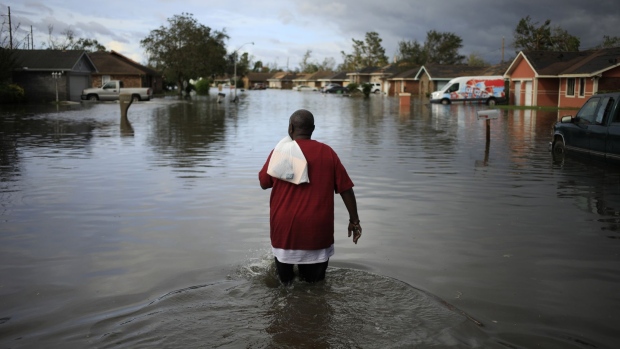Oct 1, 2021
Flood Insurance Costs Set to Rise as FEMA’s New Rates Kick In
, Bloomberg News

(Bloomberg) -- The federal government Friday rolls out a flood-insurance program revamped to reflect worsening climate change, a program that will raise rates for millions of homeowners in wealthy coastal areas and humble inland communities alike.
The Federal Emergency Management Agency in April announced the first significant update to the beleaguered National Flood Insurance Program, which covers about 5 million properties. Premiums have risen steadily, but the program is more than $20 billion in debt, thanks in part to rising seas and stronger storms. Now, a quarter of the participants will see lower costs, while the remainder will see premiums rise in increments as high as 18% annually. The maximum total increase will be $12,000, a level that will affect only the most expensive real estate.
“Climate change is going to make housing more expensive than it already is,” said Daryl Fairweather, chief economist at Redfin Corp. “This is just a first step.”
FEMA is facing an urgent but unpopular task. The program was created in 1968, when there were fewer major storms and fewer people living by the sea. But the U.S. coastal population grew by over 15.3 percent between 2000 and 2017, to over 94 million. Moreover, many inland places that have seen huge surges in flooding lack accurate maps. A 2017 report from the Department of Homeland Security inspector general found that 58% of FEMA flood maps were wrong or outdated.
The insurance program was originally meant as a backstop for homes that private insurers found too risky. Now, however, it covers 95 percent of residential flood policies. In all, the program sweeps in about 5 million properties, including primary and vacation homes and businesses. Deeply subsidized premiums, averaging under $800 annually, mean that the agency routinely pays out nearly four times what it takes in.
David Maurstad, the program’s senior executive and architect of the overhaul, said that nearly 90% of members would see premiums fall or rise only slightly, rather than the blanket increases of past years.“The new rating methodology is correcting longstanding inequities,” he said Thursday. “We can no longer continue to ignore the fact that some of our policyholders had been unjustly subsidizing other policyholders. They should no longer bear the cost for the policyholders with higher-value homes, who've been paying less than they should.”
Until now, FEMA used a fairly simple methodology developed in the 1970s that based risk ratings on two factors: whether homes were inside a severe flood zone and their elevation within those zones. FEMA says its new model, known as Risk Rating 2.0, is based on huge advances in technology. The leaps include sophisticated catastrophe models that are standard for the private insurance industry, which will allow officials to evaluate individual properties and assess risk fairly.
Hiking premiums may encourage homeowners to think more deeply about the wisdom of living in endangered areas.
“People need to have very difficult conversations about adaptation, about relocating, “ said Laura Lightbody, project director of the Flood-Prepared Communities initiative of the Pew Charitable Trusts. “Price is one of the most clear ways to communicate risks.”
But even large premium increases may not nudge people away from the water. Residents of wealthy vacation spots like Miami Beach, Florida, and New York’s Hamptons can afford them. Kevin McAllister, founder of Defend H20, a Hamptons nonprofit, said that $12,000 is “the cost of a Belgian block driveway or less for these homes.”
Gene Stilwell, executive sales manager at Town & Country Real Estate in East Hampton, said many residents will take the revamped program in stride.
“It’s worth it,” he said. “If something happens, they have the means to reconstruct and rebuild and fix whatever flood damage has occurred.”
Meanwhile, many other places with scant resources will be feeling painful increases for the first time. An $800 policy that increases 18 percent over 10 years would be $4,188, a significant increase for someone on a budget.
Last week, senators including Democrats Chuck Schumer of New York and Robert Menendez of New Jersey, and Republican Marco Rubio of Florida wrote FEMA to ask that the roll-out be delayed, arguing that too many people would see increases too abruptly. “This is a sharp departure,” they wrote.Maurstad replied that the plan had been delayed once, and that the increases would proceed Friday.
On Monday, Menendez will introduce legislation that could cut maximum annual increases to 9%, institute means-testing and add vouchers for those who cannot afford the increases.
©2021 Bloomberg L.P.